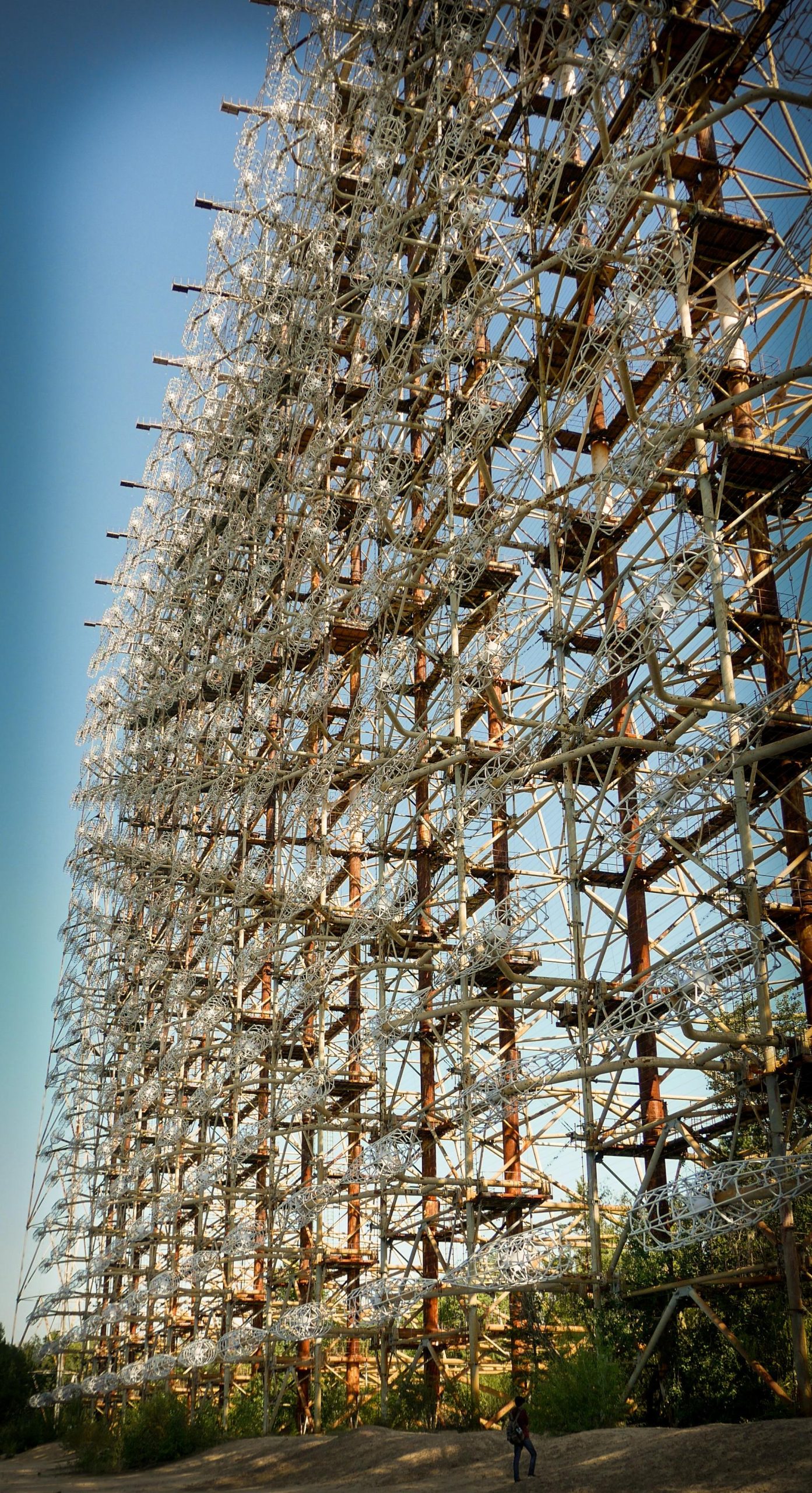“January, 2015. Dormant for a decade and a half, the Russian Woodpecker appeared to return in December 2013. Once, the notorious tapping of the massive Soviet over-the-horizon radar had frustrated and puzzled Western radio operators, who could discern neither the origin nor purpose of the strange signal. It was coming from somewhere behind the Iron Curtain; its frequency, 10Hz, made some think it was intended for mind control. In 1981, an NBC newscaster wondered, “Are they trying to reduce us to a zombie stumbling and groping around and waiting to be told what to do?” And, no, he wasn’t hosting Weekend Update on Saturday Night Live. Even after the fall of the Soviet Union, the 14,000-ton military radar installation in northern Ukraine, near the border with Belarus, has remained a mystery to outside observers, largely because it sits right next to the Chornobyl Atomic Energy Station… The creaky radar even made it (metaphorically, alas) to the Sundance Film Festival in the form of The Russian Woodpecker, a documentary by the American filmmaker Chad Gracia. The star of the documentary is Fedor Alexandrovich, a young Ukrainian performance artist whose wild hair and bouncing eyes recall Dostoyevsky’s Prince Mishkin. In the film, Alexandrovich plays the role of an investigative journalist, one who is seized by the conviction that the Chornobyl disaster of April 25, 1986—without question the worst nuclear catastrophe in world history—was staged by Moscow to cover up for the expensive failure of the Russian Woodpecker, which cost 7 billion rubles to build: that is, twice as much as the nuclear power plant.
Alexandrovich’s claims strain credulity, and as he interviews former workers of both Chornobyl and the Russian Woodpecker, some don’t mind telling him so: “Bullshit,” one says; “Extremely fantastical,” another warns him fruitlessly. Others, though, are more amenable to his conspiracy theory, puzzled as they still are 28 years later by how what should have been a routine test of Reactor 4 went so disastrously wrong. We are, after all, talking about a country where no depravity is impossible, no principle sacrosanct.
Still, it’s hard to call Alexandrovich’s version of events anything other than a conspiracy theory; if he were not such a magnetic subject, or if Chornobyl weren’t so eerily telegenic, I doubt there would have been a sleek American documentary for me to write about. The film records Alexandrovich’s increasingly strong conviction that the Russian Woodpecker was the pet project of a high-ranking Communist Party bureaucrat named Vasily A. Shamshin. Alexandrovich—who does not have a background in the sciences, though he assiduously interviews many people who do—argues that the radar was never going to be any good at intercepting American missiles, that it was like so much of the Soviet Union, superficially impressive but fundamentally pointless.
The radar’s own political midwife, Shamshin, had come to realize as much; he also knew that inspectors were about to discover his expensive failure, goes the narrative in The Russian Woodpecker. According to Alexandrovich, Shamshin personally commanded the Chornobyl power-down test to proceed on the evening of April 25, knowing full well that the conditions were ripe for disaster. Alexandrovich is devoutly convinced that Shamshin figured a meltdown at Chornobyl would easily eclipse whatever problems plagued the Russian Woodpecker.
If he truly thought this, then he was right. Then again, that’s sort of like cutting off your hand to get rid of a hangnail. Even in the venal culture of the Kremlin, ordering a nuclear meltdown to save your career seems a tad excessive. And while it is true that Alexandrovich is zealous in his quest, all of his evidence regarding Shamshin is circumstantial. There is no smoking gun, just images of the smoking reactor core, and a dearth of explanations for how we could let it get that way.
More credible is the feeling of injury he evinces, a deep-seated Ukrainian suspicion of Russia, especially, the Russia of Vladimir Putin that has already taken Crimea and has designated large swaths of eastern Ukraine as “Novorossiya,” an archaic Soviet term that just happens to serve Putin’s rapacious ends…
The Russian Woodpecker makes the same point much more forcefully, with images of emaciated corpses, victims of the famine foisted on the Ukraine by Stalin in 1931-32. First hunger, then radiation, then who knows what else? Those who occupy the borderlands—whether the peasants of Ukraine or the Chechens of the Caucasus—are always fated to suffer at the hands of the unfeeling empire. (Newsweek)
